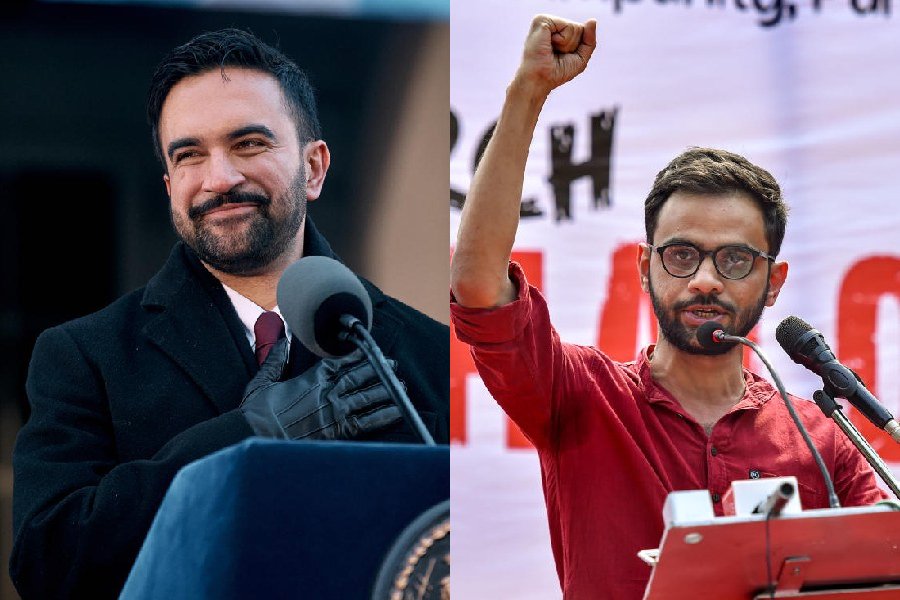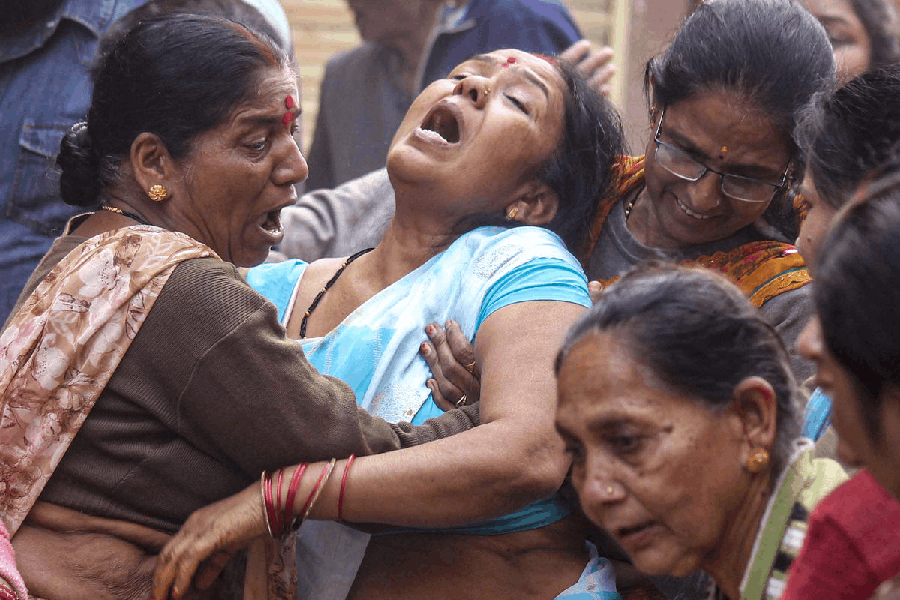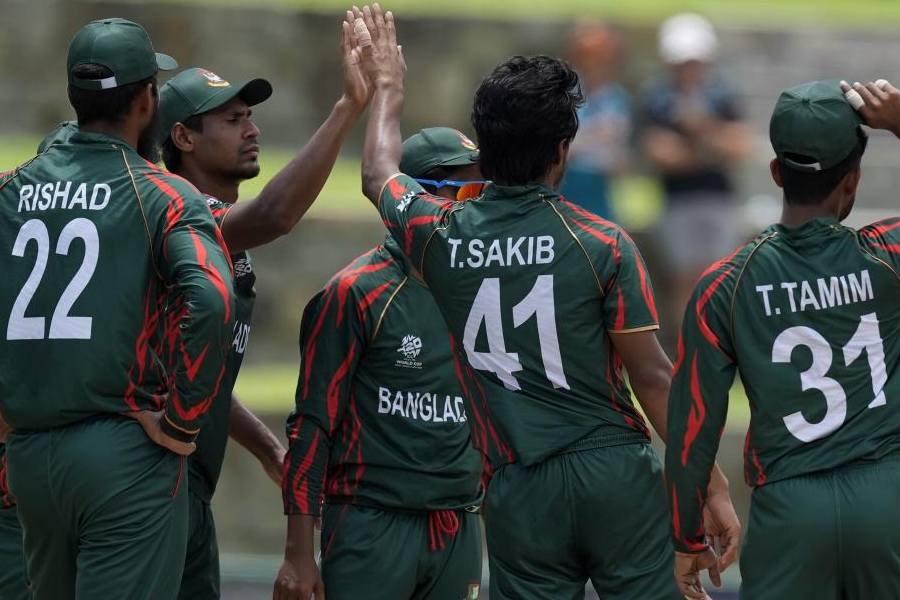|
|
Kamal Nath’s tale of a meeting with the European Union petering out in 15 minutes because the Indian side held forth on Iraq and Afghanistan while the Europeans wanted to discuss trade and investment came to mind as I read the transcript of the pre-tour White House press conference. South Block pundits who affect to despise commerce and see the world only in terms of lofty philosophy must have cringed when they read that the White House press secretary, Robert Gibbs, had no compunction about acknowledging that Barack Obama’s “trip is basically economic in focus”.
Oh yes, there’s a bigger picture too. Assuming that Tuesday’s mid-term Congressional elections don’t reduce Obama to a lame duck president, his travels speak of the grand strategy of a “Pacific President” who sees the United States of America as also an “Asian power”. He set the tone on the eve of setting out by calling Asif Ali Zardari at the conclusion of the third round of the strategic dialogue with Pakistan. Manmohan Singh, just back from Japan, Malaysia and another series of interlocking meetings in Vietnam, where Hillary Clinton will represent the US, will receive him in Delhi. Obama will then go to Indonesia (a homecoming of sorts), Japan and South Korea, where he will meet Hu Jintao and Dmitry Medvedev on the sidelines of the G20 summit.
India, soon be the world’s most populous country, with 50 per cent of its people under 25, while much of the industrialized world is ageing, may have a role in Obama’s vision, which does not conflict with the Look East policy. But no one mentioned this until high growth promised to match internal resilience with external aspirations. That was Lee Kuan Yew’s hope way back in the 1960s when he expected India would replace Britain in Southeast Asia. But an India that trails Togo in the world poverty stakes and has more poor people in eight states than in the 26 sub- Saharan African countries will fail Obama as it failed Lee. Indians who claim to prize democracy as an ideal and an end in itself might squirm to hear the US under-secretary of state for political affairs, William Burns, say that democracy “can foster economic development”.
Nevertheless, India’s elite is in a tizzy of anticipation with permanent security council membership heading the list of expectations. Specific complaints refer to the outrageously high cost of H1B and L1A visas, continuing sanctions against strategic institutions like ISRO, BARC and DRDO, demands for further security and inter-operability agreements for the most sophisticated technologies, and exclusion from the nuclear suppliers group. More important, however, are perceptions of Obama acquiescing in China’s territorial belligerence and transfer of nuclear reactors to Pakistan and of his bias on the Kashmir question, presumably because of Afghanistan.
Such differences acquire additional significance from the long history of Indo-American mistrust and the absurd daydreaming that started with Bill Clinton’s visit. India cannot expect to be America’s new Pakistan, as Sitaram Yechury put it, without making unthinkable concessions. But India can still partner the US without abandoning the self-confidence that sustained independence under Jawaharlal Nehru and Indira Gandhi by equitably harvesting the fruit of today’s high growth.
George W. Bush, Jr started the ball rolling when he told the Asia Society on the eve of visiting India that the rising purchasing power of India’s expanding middle class meant Domino’s pizzas and Whirlpool washing machines. If only Delhi’s policymakers had paid attention instead of being carried away by their own grandiose dreams, they would have known that this has been the theme ever since. The assistant secretary, Robert O. Blake, Jr, reiterated it by citing McKinsey’s prediction of “as many as 91 million middle class urban households in 2030, up from 22 million today”. As Blake says, “Each of these families will want a TV, internet service, washer and dryer, chapatti maker.” Not only are Americans “set to produce and sell the goods and services for this growing middle class”, but also the Marriott group plans to nearly quadruple the number of its hotels in India.
When Blake added that one-third more of US trade is now with Asia than Europe, he did not mention that China mainly accounts for the shift. There is a gnawing sense of dissatisfaction here that, however highly India might be rated as a regional force, Americans treat China like a global power. There is less appreciation of the importance China achieved even before acquiring a stranglehold on US Federal Reserves, by supplying the inexpensive consumer goods — shoes, ready-mades, domestic appliances — that cut American living costs and sustained the standard of living.
Consider some of the salient points to emerge from the White House press conference mentioned earlier:
A major theme Obama will emphasize is that India is a tremendous market, potential more than actual, for US exports, and also a source of investment for the US. American goods exports to India have already quadrupled over the last seven years to about $17 billion. Service exports have tripled to about $10 billion annually. At the same time, Indian companies are the second-fastest-growing investors in the US and employ about 57,000 people.
To a reporter’s mention of Indian orders worth $12 billion (including $5 billion for defence and another $7 billion for commercial deals like Boeing aircraft), which would create 50,000 to 60,000 American jobs, the deputy national security adviser, Mike Froman, replied that “the important thing is that there’s a large potential market there; that the president and the administration are active in promoting exports to ensure that there’s a level playing field there, there’s open markets there, and that our exports have an opportunity to penetrate that market and support jobs back here”. Washington hopes to clinch in the run-up to and during the visit “a number of large contracts being worked on between US companies and their Indian counterparts, oftentimes with the support of the US government”.
Defence cooperation is expanding “in ways that were hard to imagine a decade ago”, according to Burns. India now holds more defence exercises every year with the US than with any other country. American military sales over the last couple of years alone amounted to some $4 billion, with more deals likely now that India has signed the convention on supplemental compensation. Issues like climate change or the Doha round come later.
I will end with an exchange from Thursday’s press conference. Referring to the outsourcing controversy, a reporter asked if Obama was “okay with the number of times Americans pick up the phone and they get somebody in India answering their questions so long as other exports have greater access there”. After a convoluted reference to ensuring that taxpayers get a better deal, Gibbs added tellingly that given the size of the emerging Indian market, the US will not ignore opportunities for big, recognizable US companies “to sell and distribute their goods in India, which creates jobs back here in America”.
When the reporter persisted, demanding to know whether Obama would talk tough “about the imbalance caused by outsourcing”, the more senior Froman cut in with a terse, “I don't want to pre-empt what the President is going to say. I would simply say that a key part of the message is going to be that we want to make sure there’s opportunities for US jobs, US exports. And that’s a big part of his mission there.”
There could be no more lucid exposition of America’s admirable priorities. India can meet the challenge by unleashing the collective creativity of its people so that wealth is not concentrated only in the Ambanis, Mittals, Mallyas and Modis. Deng Xiaoping’s remedy was to “let some people get rich first and then when they get rich, they will move the whole society and the rest will follow”. Perhaps that formula will work in India too.












